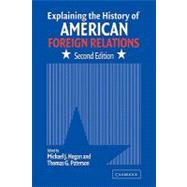
| 1. Introduction Michael J. Hogan and Thomas G. Patterson | |
| 2. Defining and doing the history of American foreign relations: a primer Frank Cosigliola and Thomas G. Paterson | |
| 3. Toward a pluralist vision: the study of American foreign relations as international and national history Robert J. McMahon | |
| 4. Theories of international relations Ole R. Holsti | |
| 5. Bureaucratic politics J. Garry Clifford | |
| 6. Psychology Richard Immerman | |
| 7. National security Melvyn P. Leffler | |
| 8. Corporatism Michael J. Hogan | |
| 9. World systems Thomas J. McCormick | |
| 10. Dependency Louis A Pé | |
| rez, Jr. | |
| 11. Considering borders Emily S. Rosenberg | |
| 12. The global frontier: comparative history and the frontier-borderlands approach Nathan J. Citino | |
| 13. Modernization theory Nick Cullather | |
| 14. Ideology Michael Hunt | |
| 15. Culture and international history Akira Iriye | |
| 16. Cultural transfer Jessica C. E. Gienow-Hecht | |
| 17. Reading for meaning: theory, language, and metaphor Frank Costigliola | |
| 18. What's gender got to do with it? Gender history as foreign relations history Kristin Hoganson | |
| 19. Race to insight: the US and the world, white supremacy and foreign affairs Gerald Horne | |
| 20. Memory and understanding US foreign relations Robert D. Schulzinger. |
The New copy of this book will include any supplemental materials advertised. Please check the title of the book to determine if it should include any access cards, study guides, lab manuals, CDs, etc.
The Used, Rental and eBook copies of this book are not guaranteed to include any supplemental materials. Typically, only the book itself is included. This is true even if the title states it includes any access cards, study guides, lab manuals, CDs, etc.